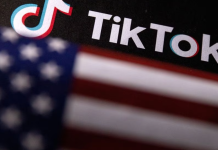YouTube servers switched to Google’s own Argos processors
According to online sources, developers from Google have created a specialized chip for the YouTube service called Argos, designed to provide the best video quality and reduce traffic consumption. Writes about this edition of CNET, which received exclusive comments from Google on this issue.

The source says there are already thousands of new processors running in Google’s data centers. They enable more efficient coding of new videos that users upload to the YouTube platform. The use of new chips can significantly speed up the processing of 4K videos. If earlier they became available for viewing after a few days, now, in most cases, such a video can be watched within a few hours.
Google first talked about its Argos chips at the ASPLOS conference this week. Google VP of Engineering Scott Silver, who also oversees YouTube’s massive infrastructure, revealed that about 100 of the company’s engineers have been developing the first generation of Argo’s chips since 2015. In recent months, Google has begun rolling out its second-generation Argos chips, which provide even faster encoding of uploaded videos and reduce the amount of traffic that mobile users spend when watching content.
“ Customers have to pay for bandwidth one way or another. Our goal is for people to receive the highest quality video on any device, ”said Scott Silver.
Video processing is one of the main tasks of YouTube. Every minute, users around the world upload 500 hours of video to the platform. Google’s infrastructure needs to recode each video and also convert them to different formats for different screen sizes. All of these processes rely on the new Argos chips to work. Argo’s processors are reported to be 20 to 33 times more efficient in video processing than conventional server processors. Each Argo chip has 10 video processing modules, and Google places two Argos chips on each board. According to Google, each uploaded video, from 10 to 15 versions of different resolutions and formats, is created, and new chips from the company provide this process.
In the video compression process, the service uses the VP9 codec, which, with the same image quality, requires about 30% less bandwidth than the currently widespread H.264 (AVC) codec. Google partnered with Mozilla, Cisco, Microsoft, Amazon, and Netflix to create the Open Video Alliance and develop the AV1 codec, the successor to VP9. The AV1 codec improves video quality by 30%, reducing the bandwidth required for playback. Thus, YouTube can broadcast 4K videos over a channel that was suitable for transmitting 1080p quality videos with the previously used codecs. The AV1 codec is supported in some browsers, but it will take years for support to become widespread. This primarily applies to mobile devices,




